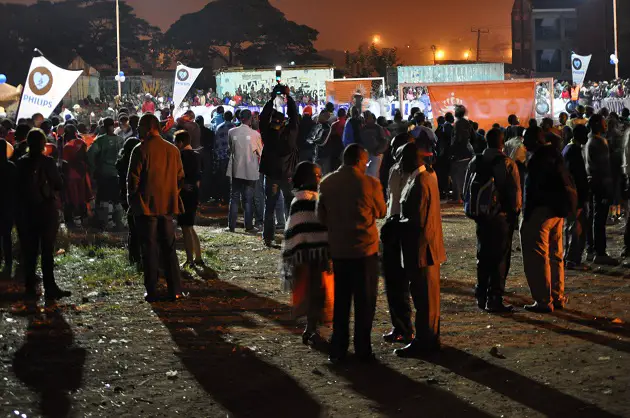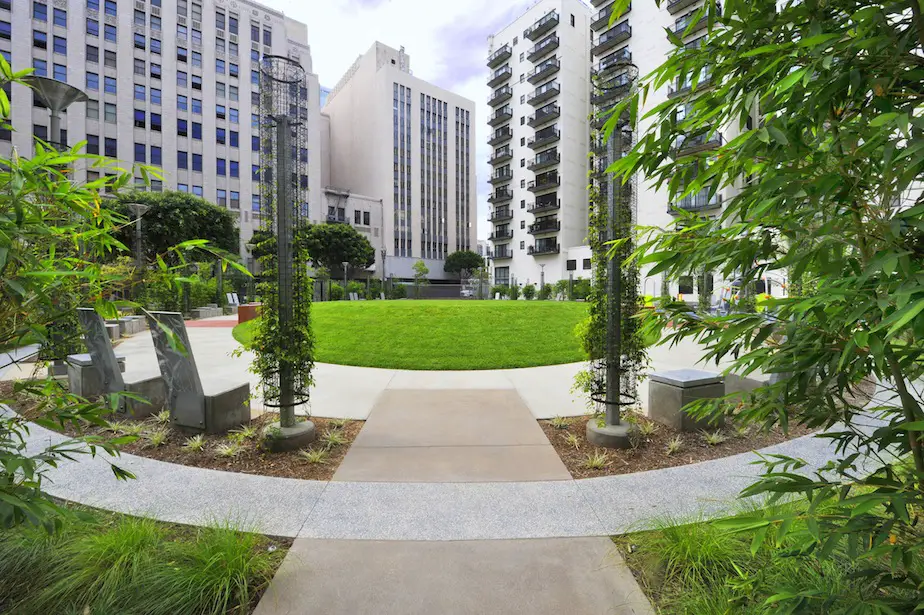Bridge building in the 21st century must be done better and differently to how it was done in the past. In Roman times the Empire built enormous viaduct bridges out of huge blocks of cut stone, hauled by slaves across Europe to bring water to cities. Today we transport water with small under-ground sanitary pipes.
The proposed Columbia River Crossing (CRC) should therefore reflect our 21st Century understanding of both global warming and Salmon preservation, illustrating our best design response to the difficult conditions we face. The CRC Bridge needs to be Green and multi-modal. It should have light rail, bicycle and pedestrian facilities to balance the car and truck capacity. The CRC Bridge will have a massive Carbon Footprint, and we need to mitigate it with Green Design.
The one simple and powerful way to do this is to place a Park Roof on top of the CRC Bridge (illustrated below). The Park Roof will be a tool to capture rainfall that would otherwise land on the road surface and mix with the oil and gas from vehicles. The pollution that would result from this is expensive to treat, so by capturing the rainfall with the Park Roof we can save money and the river’s Salmon.

The Pollution Treatment Facility required for the current design of the CRC Bridge will cost a lot, in the area of US$12-15 million. In addition to the facility, the conventional bridge roadway must be sloped in order to route drains and piping to the treatment plant. All of these metal drains and pipes cost money, adding to the carbon footprint of the bridge. By contrast, a Park Roof needs only a small gauge recycled plastic pipe sprinkler system, powered by solar panels.
The Federal Government has done studies of Green Roofs, which had been predicted to absorb 75% of rainfall, and found they captured around 95% of rainfall. By removing the requirement for a Pollution Treatment Facility, the Park Roof could save a great deal of money and improve the project’s Carbon Footprint. The CRC Park Roof will be about 370,000 Square Feet. Portland receives around 37.5 inches of rain a year, amounting to around 13,875,000 cubic feet of water captured.
As shown above, the Park Roof will be a curved cap to the bridge. This curvature will make the bridge a good deal more aerodynamic. This efficient shape will reduce structural stresses, reducing costs as a result. The savings due to better wind performance are likely to equal the cost of the additional light gauge park support frame (it is important to note that the park ‘dirt’ is made of very lightweight engineered growing medium, anchored to a matrix net to make it wind and erosion proof. This is not your grandma’s garden).
Bridges are engineered to be 3 times stronger than needed, so the additional 23 lbs/sq ft load will be absorbed on the base structure with no additional load cost. The Park Roof will be a one-of-a-kind world-class green public facility. It can be the sign and symbol of Green Portland, Green Oregon, and the Green Northwest! We love our solar plants and windmill fleets, but they are out of sight, and thus out of mind. The CRC Park Roof will greet every visitor driving from the north and every airline passenger flying into the airport. The vast arcing park high above the Mighty Columbia will draw Green Tourists – an industry worth hundreds of billions of dollars – from around the world.
An Eco-Tourist business is logical for Columbia with our stunning natural landscapes, outdoor activities and open, progressive thinking. The region needs a powerful symbol, one that clearly represents our Green Beliefs. The Park Roofed CRC Multi-Modal Bridge can be our Green ‘Golden Gate.’ Our Green Gateway to the Northwest.
William Badrick is an author and architect. He has written four books and has worked on sustainable energy, public space and adaptive re-use projects.


